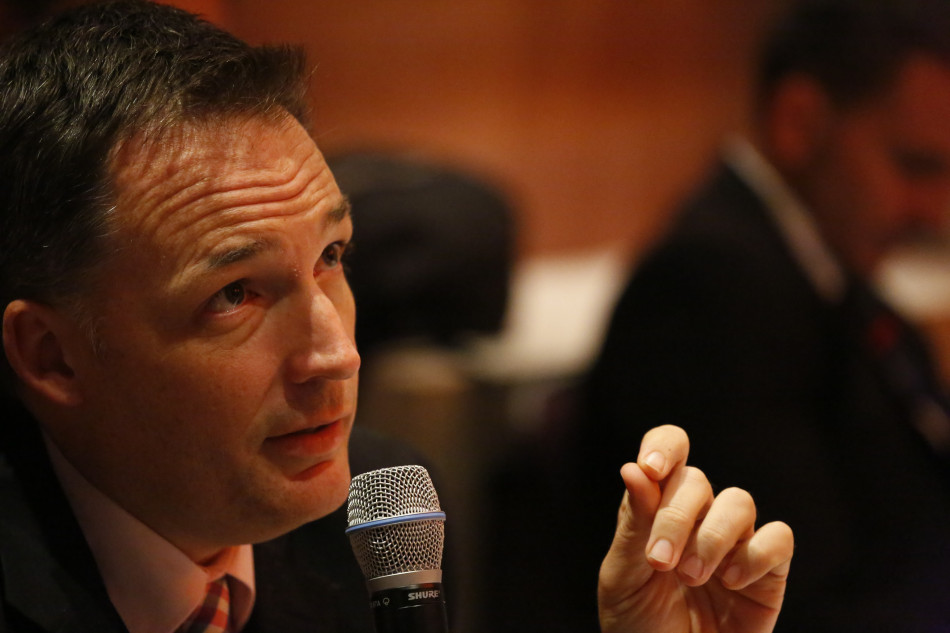Working through the changes

Changing Membership
Jim Langford from the Monash University Accident Research Centre and Robert Stephen from the American Association of Retired People presented to clubs a changing mobility sector in which populations are getting older, as are clubs’ customer groups. On the other hand, younger generations are less dependent than ever before on the car. Delegates heard how membership will continue to change as older drivers give up their cars and young people opt for alternatives. In this environment, it will be up to clubs to adapt.
Big Data
Developments in mobile communications technology are reshaping cars and the way we drive. But new technology approaches also mean changing market opportunities and business relationships for clubs. So who are the main players in this new market?
That was the theme of the Big Data workshop, but as the session developed, key industry figures agreed that the market is still far from being settled.
“Because the value chain is so long, and there are so many different players, you can’t really say there are main players,” said Richard Cornish from Vodafone. He added that there is an opportunity today for someone to “pull together a proposition that involves incremental charging, city and security, and vehicle relationship management. No organisation is offering an internet solution where business solutions are integrated.”
Rod Chapman from RACV agreed that as yet there is no single organisation that can be readily identified. “What we see is that the landscape is changing almost daily. And I think there’s so much data out there, it’s just up to who uses this information to transfer it into something the consumer values,” he said.
A different view, however, was given by Graeme Banister of Frost & Sullivan who said: “I think that there some big players are circling – we heard them all today – IBM, Vodafone, CISCO.”
Looking at the options available to member clubs, he added: “the clubs have an opportunity to partner with these companies, to offer something which actually for their customers is far in advance of what an individual company can offer.”
Own the Data
In a workshop dedicated to clubs’ assistance services and ‘right to repair’, delegates were told that access to a vehicle’s technical system to perform diagnostics, service, maintenance and repair is critical to the future business of clubs and also to the right of consumers to choose their preferred service.
“FIA Clubs have a unique opportunity to work together in each of the FIA regions to influence policy at the international level on the critical issue of access to repair and maintenance information,” said Stefanee Lovett of the AAA. “This access to data is essential in order for clubs to continue to provide the services they provide today, and to be able to provide new services in the years ahead.”
Maja Berends from ADAC stressed the need for clubs to focus on data protection, consumer protection and what will happen to wireless data as that new technology increasingly comes into vehicles.
Detlef Wilke from DELPHI, a leading global supplier of electronics and technologies to the OEM automotive sector, meanwhile, said: “Data changes will bring both opportunities and challenges for both automobile clubs and OEMs.”
In particular, he said, this would concern integration of their aftermarket and OEM fitted telematics systems into solutions that are based on a common standard and which will allow for data exchange.
Own the Client
Making sure clubs develop close, personalised relationships with their members in the future was the focus of the ‘Own the Client’ workshop.
Jeff Walker from Canada’s CAA said that the interaction of any club with its members should be set in the framework of a relationship. And like any relationship, this is best developed through the frequency and positive nature of those contacts: “It’s not good enough to just take their money every year whether they use the service or not. Clubs should be looking to develop durable relationships,” he said.
He stressed that there is no easy ‘one size fits all’ solution, however, and that services have to be offered (and tailored) in ways that allow clubs to talk, target, interact and assist people, in particular through technology. Historically the focus of clubs has tended to be too much on generic solutions he said.
The Canadian club, for example, texts members waiting for roadside assistance in advance to let them know how long they will have to wait: the member is happy to be kept up to speed while waiting and the club gets to demonstrate its technical aptitude. And although not everyone has a smart phone, almost everyone under the age of 40 years of age probably does. Technology will be at the centre of clubs’ future relationships with members.
Professor Dr Luis Vives from ESADE and the FIA University asked how can organisations become more than a club? He said clubs need to focus on their heritage as a strategic resource for reinvention. Looking at the example of FC Barcelona, he said that the football club’s relationship with customer was entirely predicated on the building of an emotional relationship with their fans and such measures could be undertaken by clubs.

 Facebook
Facebook Twitter
Twitter






